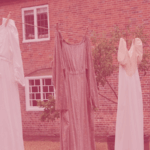When I started writing a novel about conspiracy theorists, I had a pretty good idea what to make of them. I was a cynic. I had followed the lawsuit brought against Alex Jones by the families of the Sandy Hook victims. I had read tweets doubting the authenticity of the bombing at the Manchester Evening News Arena in 2017, where 22 people were killed in my hometown. I started writing Day One in lockdown, as I watched anti-vax protestors target medicine watchdogs, hospitals and NHS test centers. I walked past lampposts where their stickers were pasted, describing immunization and face masks as the Incremental Steps to Total Enslavement. I rolled my eyes and kept walking.
But once I started writing Day One, I encountered a problem. I wanted half of the novel to be narrated from a conspiracy theorist’s perspective, and the character was despicable. He was cold and unknowable. I could imagine readers skimming his pages, eager to return to the families he torments.
In 2022, while I was grappling to edit the novel, the Policy Institute at King’s College London conducted research for the BBC which found that one in five people (19%) think the victims of terror attacks in the UK are not being truthful about what happened to them. This was not a band of fringe aggressors, and nor was it people sheltering in their basements with stockpiles of tinned food, waiting for the apocalypse to come. These were real people, and plenty of them. If I was going to write about them, I would need to understand them, same as with any other character.
*
If you’re investigating conspiracy theories, it’s impossible not to buy into conspiratorial thinking—temporarily, at least. You must trawl the same websites, read the same comments, suspend the same disbeliefs. The first fact that surprised me—that made me think, begrudgingly, fair enough—was the number of conspiracy theories that have a kernel of truth at their heart.
The most stunning example of this relates to vaccine skepticism. It is easy to laugh at the prospect of governments using the COVID-19 vaccine rollout to gather data and track their populations, and easier still to guffaw at the prospect of Bill Gates spearheading this effort. But it is harder to laugh once you know that government agencies— namely, the CIA—have used this exact tactic in the past.
In 2011, when the CIA was trying to track down Osama bin Laden in Pakistan, they organized a fake vaccination rollout in the town where they believed he was hiding. The aim of this rollout was to obtain DNA to provide evidence that the Bin Laden family was present. The false rollout was so carefully devised that the project was arranged to begin in the poorer part of the region to achieve greater authenticity. In this context, conspiracy theories followed a thread of logic I could understand.
Conspiracy theories had exploded during the pandemic; it was the closest I had come to buying into conspiratorial thinking myself. Lockdown was over, but to change my approach, I would need to plod back to those strange, lonely days, and sniff out the reasons why so many people had started to doubt the world as they knew it.
This is what I found. I take these theories from my own experience of lockdown, rather than any specific dataset.
First, there was fury; and from that fury, suspicion. During 2020, my grandmother and uncle died, and I was not permitted to attend their funerals. Our prime minister bumbled from one illogical diatribe to the next, excruciatingly incompetent. In the time since, it has transpired that the government and their advisors were lying to the population of the UK. While our relatives died alone, they held parties at Downing Street, conducted extra-marital affairs, and traveled to scenic beauty spots. I do not believe that they planned to use COVID-19 to subdue the free will of the population – that would have required a degree of organization I doubt they could have achieved – but I have no trouble in believing that they were deceitful and callous. Mysteriously, some 5,000 of Boris Johnson’s WhatsApp messages, sent at the height of the pandemic, disappeared prior to the COVID Inquiry in 2023; “I don’t know the exact reason,” the former prime minister said, “but it looks as though it’s something to do with the app going down and then coming up again”. In this political landscape, it was not difficult to believe that facts were being hidden, and truths half-told.
Secondly, isolation. London was entirely still, shuttered up, emptied of pedestrians and traffic. Who didn’t become strange, life reduced to a small apartment, hair uncut, stewing in your own company? The only communities that remained open were online. Communities of conspiracy theorists have their own sense of exclusivity, centered around the belief in something that most of the population appear to be missing. What better place to shelter?
Thirdly, time. For some of us, there was a lot of it, and one of the only places to spend this time was on the Internet. Online you are vulnerable to your own extremism; some research has found that YouTube’s algorithm, for example, can direct users towards ever-more extremist content. A query for videos about a particular suspicion may risk serving up ever-more deranged conspiracy theories, their creators ever-more certain of the beliefs they peddle.
Finally, poignantly, there is the search for order. When Professor Cynthia Wang (Northwestern University) was interviewed about COVID conspiracy theories in 2021, she admitted that the theory that microchips are hidden in vaccines provides for ‘a very clear and compelling story. That’s a much more comforting story than saying, I don’t know if these vaccines really work’. All writers love a good story, and manipulation and intrigue is much more seductive than the real tale of the universe, its confusion and uncertainties and absurdities. Equally, some stories that unfold in this world are too difficult to bear. Of the early Sandy Hook doubters, Elizabeth Williamson writes that ‘Many of [them] were young mothers who could not come to grips with the murder of so many children so young’. Better government manipulation and crisis actors. Better a conspiracy.
*
What does my conspiracy theorist character look like, now? I found that I couldn’t fit the world of conspiracy theories into a single entity and maintain a believable creation. Day One instead offers a glimpse into all sorts of conspiratorial ways of thinking. There are the cultish leaders who peddle conspiracy theories; these characters will never have my sympathy. There are people who dedicate their lives to conspiracy theories, whoever they happen to wound along the way; and I continue to peep into their worldview with caution, unsure where they may turn their obsessions next. .
But at the heart of Day One, there is Trent Casey, a character starved of human connection and seeking a community he can call his own. His circumstances conspire to a run of bad luck which any one of us may suffer: familial isolation, bereavement, rejection by the journalism profession he wishes to join. He is no longer despicable, but painfully ordinary. That, after all, is a much more frightening prospect.
***


















